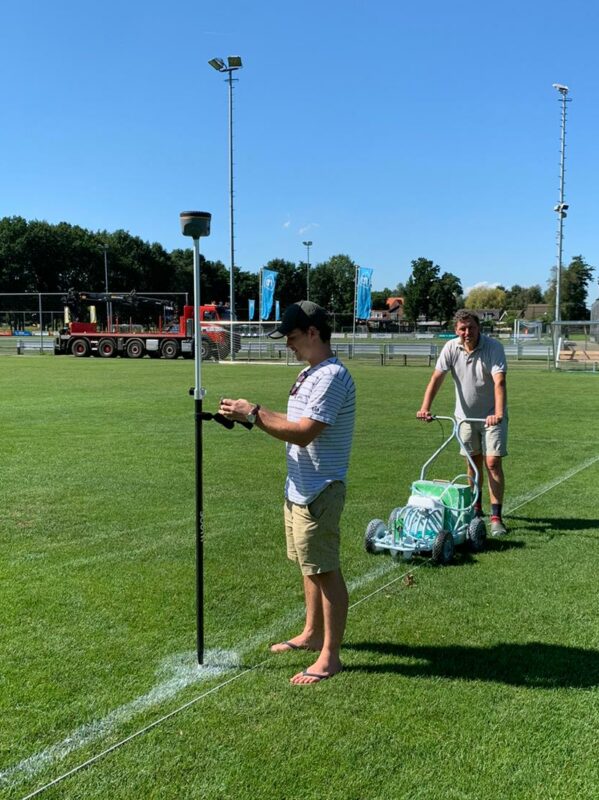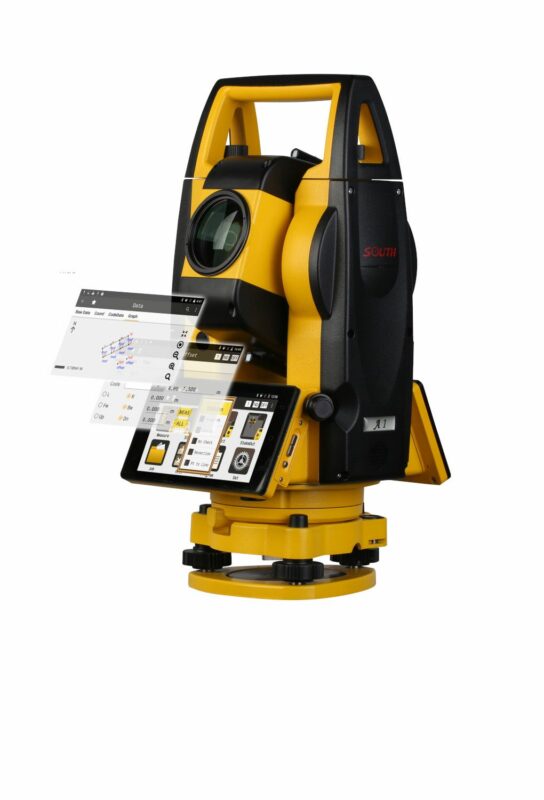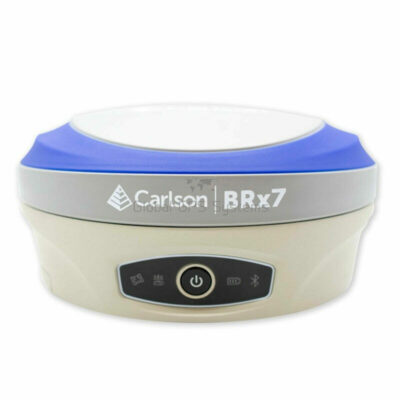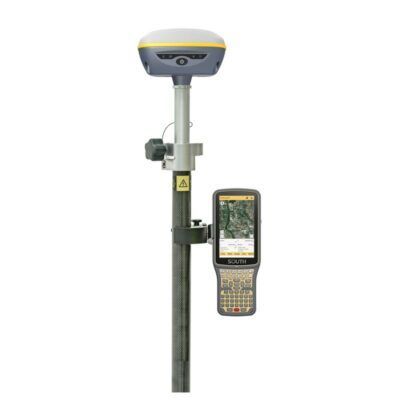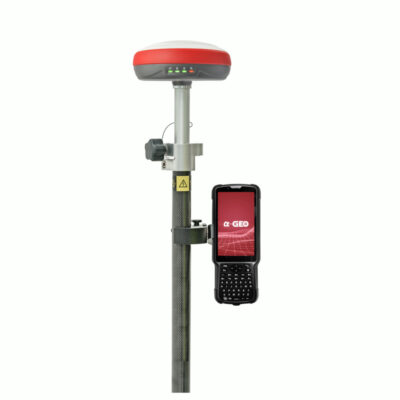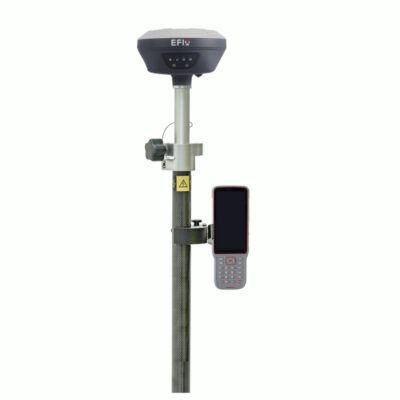GNSS
Introduction to GNSS IMU Systems
A GNSS (Global Navigation Satellite System) IMU (Inertial Measurement Unit) is a device that combines the capabilities of both a GNSS receiver and an IMU. These systems provide highly accurate and reliable navigation and positioning data, and are widely used in a variety of applications, such as aviation, maritime navigation, and autonomous vehicles.
How GNSS IMU Systems Work
A GNSS receiver is a device that receives signals from satellites orbiting the Earth and uses the information contained in these signals to determine the user’s position and velocity. An IMU, on the other hand, is a device that measures the user’s acceleration and angular velocity.
When a GNSS IMU system is in operation, it receives signals from multiple GNSS satellites and uses this information to determine the user’s position and velocity. At the same time, it also measures the user’s acceleration and angular velocity using an IMU. This data is then combined to provide a highly accurate and reliable estimate of the user’s position, velocity, and orientation.
Advantages of GNSS IMU Systems
One of the main advantages of GNSS IMU systems is their high accuracy and reliability. These systems are able to provide highly accurate position and velocity information, even in situations where the GNSS signals are weak or obstructed. Additionally, the use of an IMU allows for continuous tracking of the user’s position and orientation, even when GNSS signals are not available.
Another advantage of GNSS IMU systems is that they are able to operate in a wide range of environments and conditions. These systems are designed to be rugged and durable, and can be used in a variety of environments, including urban areas, forests, and the open sea. They are also able to operate in extreme temperatures, humidity, and other conditions.
some popular gnss receivers with an imu tilt sensor
Applications of GNSS IMU Systems
GNSS IMU systems are widely used in a variety of applications, including:
- Aviation: GNSS IMU systems are commonly used in aviation for navigation and guidance of aircraft. These systems provide pilots with highly accurate and reliable position, velocity, and orientation information, which is critical for safe and efficient flight operations.
- Maritime navigation: GNSS IMU systems are also used in the maritime industry for navigation and guidance of ships and boats. These systems provide captains with highly accurate and reliable position and velocity information, which is critical for safe navigation and avoiding collisions.
- Autonomous vehicles: GNSS IMU systems are increasingly being used in autonomous vehicles, such as drones and self-driving cars. These systems provide the vehicle with highly accurate and reliable position, velocity, and orientation information, which is critical for safe and efficient operation.
- Surveying and mapping: GNSS IMU systems are used in surveying and mapping to determine the position and orientation of survey points and other features.
- Robotics: GNSS IMU systems are also used in robotics for navigation, localization and controlling motion of robots.
- Outdoor recreation and fitness: GNSS IMU systems are also used in outdoor recreation and fitness activities such as hiking, biking, and running. These systems can be used to track the user’s position and velocity, and to provide other information such as distance traveled, elevation, and calories burned.
Advanced Features of GNSS IMU Systems
Many modern GNSS IMU systems come equipped with advanced features that enhance their capabilities and performance. Some examples of these advanced features include:
- Multi-frequency and multi-constellation support: Many GNSS IMU systems support multiple frequencies and multiple constellations, such as GPS, GLONASS, Galileo, and BeiDou. This allows for greater flexibility in terms of satellite availability and improves the robustness and accuracy of the navigation solution.
- Integrated RTK: Real-Time Kinematic (RTK) is a technique that uses a reference station to provide corrections to the GNSS receiver, resulting in sub-centimeter level accuracy. Many GNSS IMU systems have integrated RTK capabilities, allowing for even higher accuracy navigation solutions.
- Integrated barometer and magnetometer: Some GNSS IMU systems also include a barometer and magnetometer. The barometer can be used to measure the atmospheric pressure and determine the user’s altitude. The magnetometer can be used to measure the earth’s magnetic field and provide heading information.
- Integrated camera and LiDAR: Some GNSS IMU systems also include a camera and LiDAR sensor. The camera can be used for visual odometry and SLAM (Simultaneous Localization and Mapping), while the LiDAR can be used for rangefinding and obstacle detection.
Choosing the Right GNSS IMU System
When choosing a GNSS IMU system, it’s important to consider the specific requirements and constraints of the application. Some factors to consider include:
- Accuracy and reliability: The required level of accuracy and reliability will depend on the specific application. For example, a self-driving car will require a higher level of accuracy than a hiking GPS.
- Size and weight: The size and weight of the GNSS IMU system will be important for applications where size and weight are critical factors, such as in drones and wearable devices.
- Power consumption: The power consumption of the GNSS IMU system will be important for applications where battery life is a critical factor, such as in portable devices and drones.
- Cost: The cost of the GNSS IMU system will be an important factor for many applications.
- Advanced features: The advanced features of the GNSS IMU system will depend on the specific application. Some advanced features may not be required for certain applications, while others may be critical.
some popular gnss rover sets with an imu tilt sensor
GNSS IMU Integration
One of the key advantages of GNSS IMU systems is their ability to integrate with other sensors and systems. This allows for a more comprehensive understanding of the environment and the user’s position, velocity, and orientation.
- Integration with cameras: Cameras can be used for visual odometry, which is a technique that uses the visual information from a camera to estimate the motion of a vehicle or other platform. This can be used to improve the accuracy and robustness of the navigation solution, especially in situations where GNSS signals are weak or obstructed.
- Integration with LiDAR: LiDAR (Light Detection and Ranging) is a sensor that uses laser beams to measure distance. LiDAR can be used for rangefinding and obstacle detection, which is critical for safe navigation in autonomous vehicles and robots.
- Integration with other sensors: GNSS IMU systems can also be integrated with other sensors, such as ultrasonic sensors, radar, and sonar, to provide a more comprehensive understanding of the environment.
Challenges and Limitations of GNSS IMU Systems
While GNSS IMU systems offer many advantages and capabilities, there are also some challenges and limitations that need to be considered.
- GNSS signal availability: GNSS signals can be weak or obstructed in certain environments, such as urban areas or in the presence of tall buildings and trees. This can affect the accuracy and reliability of the navigation solution.
- IMU errors: IMUs can also introduce errors, such as bias and drift, that can affect the accuracy and reliability of the navigation solution.
- Integration challenges: Integrating GNSS IMU systems with other sensors and systems can also present challenges, such as ensuring proper synchronization and coordination between the different sensors and systems.
- Computational complexity: Combining data from multiple sensors and systems can also increase the computational complexity of the navigation solution, which can be a significant challenge in certain applications.
Future of GNSS IMU Systems
The future of GNSS IMU systems is likely to see continued advancements in terms of accuracy, reliability, and capabilities. Some of the key areas of focus include:
- 5G and beyond: As 5G and future generations of cellular networks are deployed, GNSS IMU systems will have access to more reliable and accurate positioning and navigation data, which will improve the performance of these systems.
- Artificial Intelligence and Machine Learning: The use of AI and machine learning techniques will enable GNSS IMU systems to learn from their experiences and adapt to new environments and conditions, which will improve their performance and capabilities.
- Integration with other sensors and systems: GNSS IMU systems will continue to be integrated with other sensors and systems, such as cameras, LiDAR, and ultrasonic sensors, to provide a more comprehensive understanding of the environment and the user’s position, velocity, and orientation.
Conclusion
GNSS IMU systems are highly advanced devices that provide accurate and reliable navigation and positioning information. These systems have a wide range of applications, from aviation and maritime navigation to autonomous vehicles and outdoor recreation. With advanced features such as multi-frequency and multi-constellation support, integrated RTK, and integrated barometer and magnetometer, modern GNSS IMU systems offer even greater capabilities and performance. While there are some challenges and limitations to these systems, the future looks bright for GNSS IMU systems as technology continues to advance.

